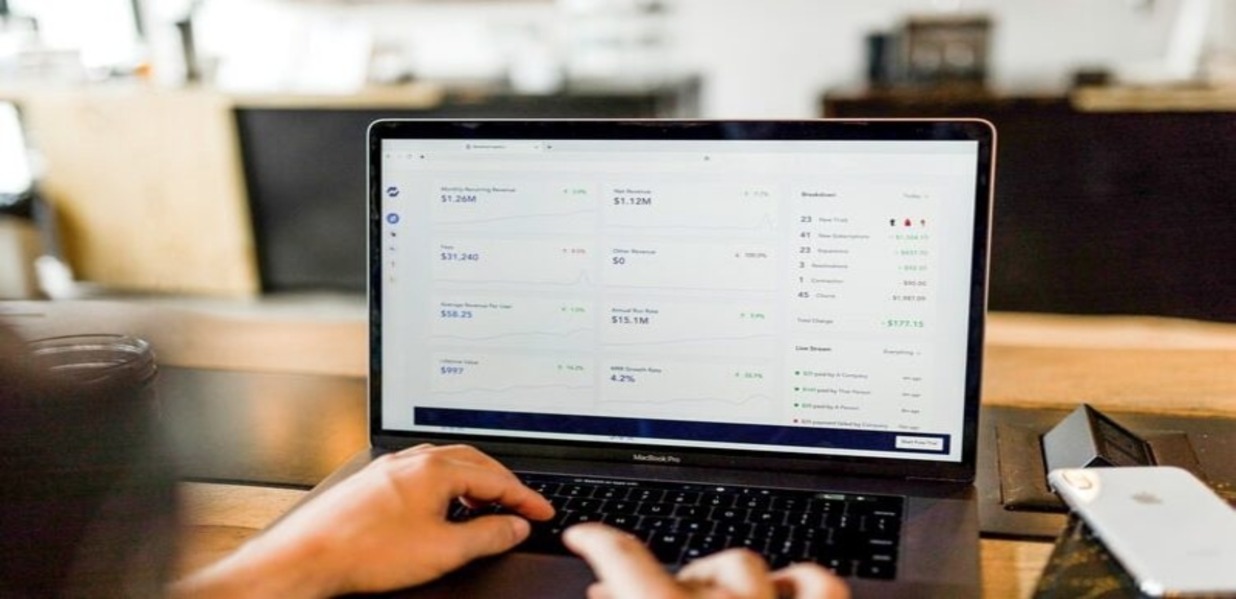Build a Data-Driven Personalization in Banking You Can Be Proud Of
We have been involving banks in the data for decades, from the evaluation of credit gambling to projecting economic reforms, and from monitoring transactions to managing the day-to-day activities with which a bank protects, stores, and loans to consumers and corporations.
With internet arrival, the growing speed and coverage of high-speed mobile networks, the prevalence of smartphones, the development of e-commerce, entertainment, messaging, searching, and all the other stuff people do online suggests that the abundance of data being generated is growing at an exponential rate.
What is Data-Driven Personalization?
Data-driven personalization dissects consumer transaction data in real-time, implements machine learning and AI algorithms to conclude what’s relevant, and presents personalized insights and guidance to clients.
Insights give customers an overview of their finances, from expenditures to cost-cutting possibilities, and suggest activities to properly handle day-to-day banking.
Besides insights and guidance, popular banks are suggesting advanced automated financial wellness plans. These are membership programs where the banks may save, invest, or settle the debt in a customer’s name.
What is Personal Banking?
Tech giants such as Amazon, Facebook, and Google have encouraged more personalized communications and cultivated an enthusiasm to trade data for a more satisfying experience.
The assumption of personalized banking has become more relevant now than earlier. Targeting customer micro-segments and customizing offers for them will allow banks to distinguish themselves, develop customer commitment, and achieve a reasonable edge.
Step one must be to recognize what personalization is and what personalization is not. Subsequently, banks and financial organizations can take advantage of a vast repository of customer data, consumer touch-points, and digital platforms to execute essential and important personalized experiences.
Truth be told, personalization in banking is not essentially a selling activity. It is all about offering services, data, and guidance, usually from day to day or even twice a day. Interactions like these, instead of occasional sales conversations, build the essence of the consumer banking experience. Many banks still give priority to focusing their personalization attempts on the sales platform.
Currently, machine learning and data analytics can achieve a multichannel digital experience for your clients. With vast amounts of data available for banks and finance companies, hyper-personalization provides an opening to lead the pack with a unique selling point.
This also ensures substantial progress, with the Boston Consulting Group predicting that thriving personalization on a large scale could mean the growth of 10% in a bank’s annual revenue.
The most significant point to be remembered for a bank is to stay at the forefront as you figure out your clients better and take advantage of those insights and devise tailor-made digital experiences that increase profits.
Consumers also expect a fundamental level of personalization, hyper-personalized expertise in individual finance may cause magnified satisfaction and commitment, fraud prevention, and more reliable decision-making, including a perception of humanized judgment from the banks.
This humanized understanding by banks can be shown, including:
- Behavioral Personalization: This customization aims to figure out the users' priorities regarding their activities, which comprises visit count, search terminology, content read, actions received, and referrers' websites.
- IP Based Personalization: This customization can get reports and data about the unidentified user from the IP address and DNS records. Such personalization utilizes geolocation tracking, which the company associates with personalizing the experience.
- Online Banking, CRM, and Loan/Deposit applications: These dynamic varieties of personalization use inputs by different banking platforms to run personalization. Even though personalizations such as these may seem complicated, execution is simpler than expected.
Regardless, personalization results in bigger challenges like — Can we see technological advancement and privacy being friends? Currently, these regulations cannot look after an individual's interest in the present time.
Geolocation tracking, biometric reports, and facial recognition apps can always defy the right to privacy, but there is no legislative structure that governs or empowers the value of such technologies without compromising the Fundamental Right to Privacy granted under Article 21 of the Constitution.
Online Banking
Initially, banks and financial institutions have embraced technology to keep in touch with customers, deliver benefits and possibly make money. Mostly, online or web-banking allows users virtually any service commonly accessible through a local branch covering deposits, transfers, and online bill payments through desktop, laptop, or mobile phones. Intrinsically, online banking authorizes customers to use services in just a few steps.
We have plentiful benefits of online banking, namely 24/7 access to their bank accounts from all over the world, easy fund transfers, plus exceptionally protective transactions of low to high value.
The most recent thing in internet banking is to incorporate outside persons into the electronic business. Users need banks to reach out to a third party, for illustration, to settle their bills. Here, the internet channel can also perform the entire transaction electronically, causing dramatic cost and time saving for all the parties involved in it.
The electronic business situation of internet banking is setting up altogether different services — services that do not happen in other banking channels — that can be expanded to new consumer sectors and operated to generate different revenues.
How Data-Driven Personalization Can Benefit Banks
Enterprises all over the world are looking at the benefits of providing their clients' customized services and marketing. Personalization is not only a maneuver, but it is a thing customers actively want—and they seek brands that can arrange it for them.
All banks have been focusing on personas and micro-segments for several years. Lately, these low-level personalization attempts have acted as a brand unique selling point.
Despite this, in recent times, the well-developed data-driven personalization being forwarded by big brand retailers and tech giants is driving the banking industry to reassess the energy it is carrying out. These businesses place personalization in the middle of their business models and apply it to stimulate intelligent and substantial business profits.
What Is Not Personalization
Even though customization is gaining recognition, an explanation has yet to be universally acknowledged. The fallacious narratives that we have encountered have segmented product offers, personalizing homepage messages, and computerizing the consumer journey.
The above factors are decisive in enabling personalization, but they are not equivalents. Providing unique user experiences in non-digital mediums (branches and call centers) can change everything.
We establish true personalization in establishing a deep understanding of each clients’ unique desires and setting up a set of tailored experiences across digital and human mediums.
A skilled sommelier who changes the wine recommendation based on a customer’s tastes, mood, and resources might take an identical procedure. Personalization likely sets up a win-win plan for both banks and the clients they work with.
Should We Buy or Build?
The largest public banks influence the domestic build category — Bank of America with Erica, Chase with Smart Insights, and Citi with Insights — and invest significantly larger technology budgets.
Over the course of its $1 billion venture into mobile facilities, Bank of America has invested tens of millions in its Erica digital assistant and is allegedly spending more to empower it to bring smarter data-driven observations.
Besides U.S. national banks, 83% of super-local and local banks are maximizing the use of third-party vendor solutions, as per Personetics’ 2020 research.
To better understand the experience, these banks often incorporate third-party means with in-house analytics capabilities and models to present varied solutions extensively with better productivity.
Even though North America is driving the push to embrace and innovate, data-driven personalization is an international development, with leading banks in the U.K., Europe, Singapore, Korea, Japan, and Australia all developing alternative solutions.
A leading international bank is expanding its facilities in various countries across Europe and the Americas, beginning with Spain.
Why Is Now the Moment for Data-Driven Personalization?
In spite of the ongoing pandemic disruption, data-driven personalization is on an expeditious acceptance curve. I think that primitive insights and guidance will become table stakes and will be furnished by most banks in North America by the end of 2022 for several motives:
- Stable digital works will remain even after the pandemic, heightening the value of enhancing client relations through digital mediums.
- Top banks are opening to vigorously support the capability, enhancing the competitive parity bar.
- Consumers are adopting customized insights, getting satisfaction scores of 4.4 out of 5, as per Personetics’ 2020 international banking reports.
- Public banks and credit associations are demanding personalization from their digital banking platform suppliers.
Personalization Drives Business Impacts
Data-driven personalization serves the banking business both strategically and economically. Strategically, it makes use of and takes advantage of banks’ most beneficial asset: user data.
It shows to clients that their bank truly knows them and is looking forward to their monetary welfare. It enhances the importance of communications between banks and their clients, strengthening faith and developing relationships.
In an ongoing economic situation where returns and margins are under relentless pressure, banks must provide projects that deliver a high ROI.
Leverage Data to Differentiate.
Banks that still have to look at data-driven personalization should remember that it will quickly become a cutthroat requirement. They should attempt to carry out essential personalization capabilities and demand these facilities from their digital banking platform suppliers.
Now Is the Time
Personalized banking is turning into a phenomenon, with top banks seeking to remodel how they communicate with consumers. Banks that make personalization at scale continue to make substantial performance improvements and set up a dynamic obstacle to disintermediation.
Organizations that capture challenges most quickly and bring proper end-to-end personalization will establish meaningful leverage over their adversaries. For those that have not previously embraced the campaign, the time to execute is NOW.
Solve Your Fintech Challenges
Our group of Fintech experts will help you in finding Fintech solutions that require; therefore, you can satisfy the demands of 2021 and further.
For more details, communicate with one of our Fintech specialists today.
 June 27, 2025
June 27, 2025
 Balbir Kumar Singh
Balbir Kumar Singh
 0
0
 June 13, 2025
June 13, 2025
 Balbir Kumar Singh
Balbir Kumar Singh
 0
0
 May 30, 2025
May 30, 2025
 Balbir Kumar Singh
Balbir Kumar Singh
 0
0
 June 27, 2025
June 27, 2025
 Balbir Kumar Singh
Balbir Kumar Singh
 0
0
 June 13, 2025
June 13, 2025
 Balbir Kumar Singh
Balbir Kumar Singh
 0
0
 May 30, 2025
May 30, 2025
 Balbir Kumar Singh
Balbir Kumar Singh
 0
0
 June 27, 2025
June 27, 2025
 Balbir Kumar Singh
Balbir Kumar Singh
 0
0
 June 13, 2025
June 13, 2025
 Balbir Kumar Singh
Balbir Kumar Singh
 0
0
 May 30, 2025
May 30, 2025
 Balbir Kumar Singh
Balbir Kumar Singh
 0
0









Leave a Reply